Abstract
In vitro, macrophages from normal strain BRVR mice killed Salmonella more quickly than did macrophages from normal strain BSVS mice. Salmonella injected intraperitoneally multiplied more quickly in BSVS mice than in BRVR mice. BRVR macrophages injected intraperitoneally into BSVS mice protected against Salmonella multiplication better than did BSVS macrophages. The populations of peritoneal cells that could be washed from the peritoneal cavity of normal BRVR and BSVS mice were morphologically and numerically identical. In vitro, BSVS macrophages were as efficient as BRVR macrophages in phagocytizing virulent Salmonella. These findings all support the concept that the greater natural resistance of BRVR mice to Salmonella infection may be explained by the greater ability of normal BRVR macrophages to kill ingested Salmonella.
Full text
PDF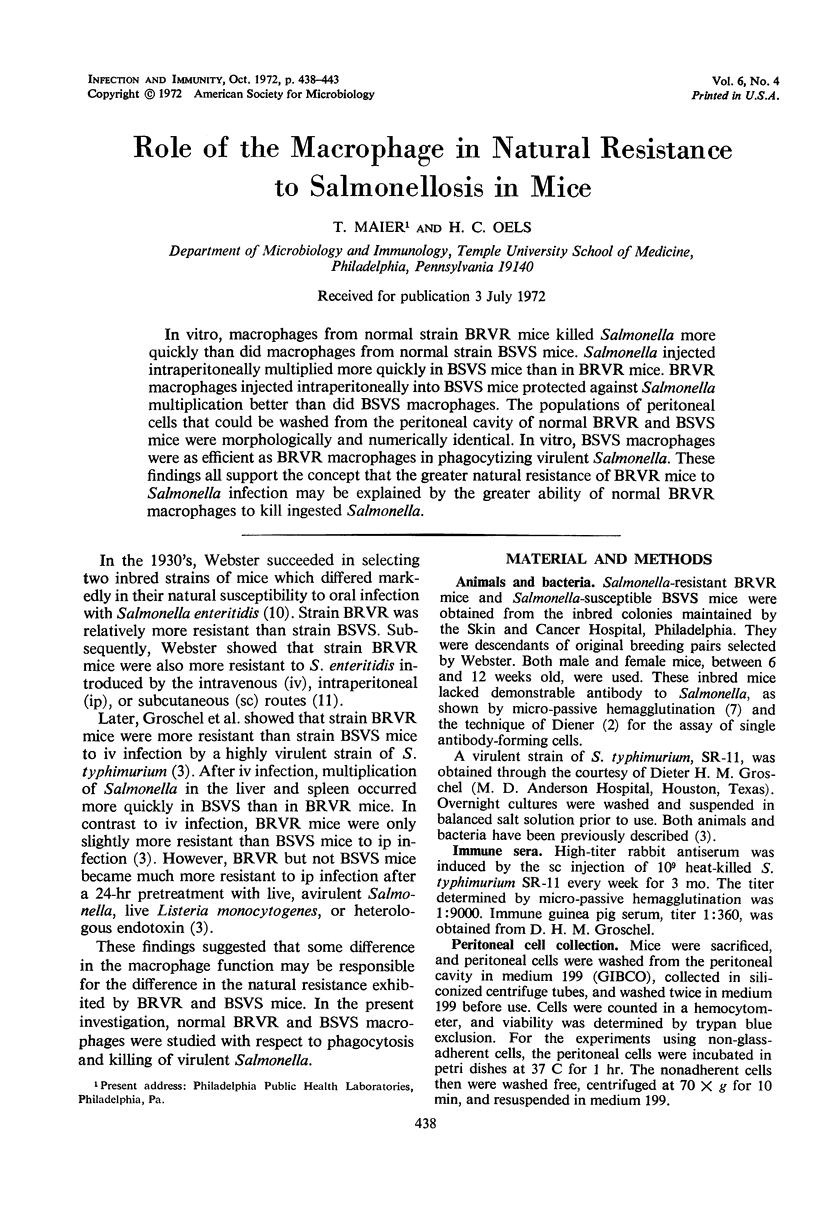
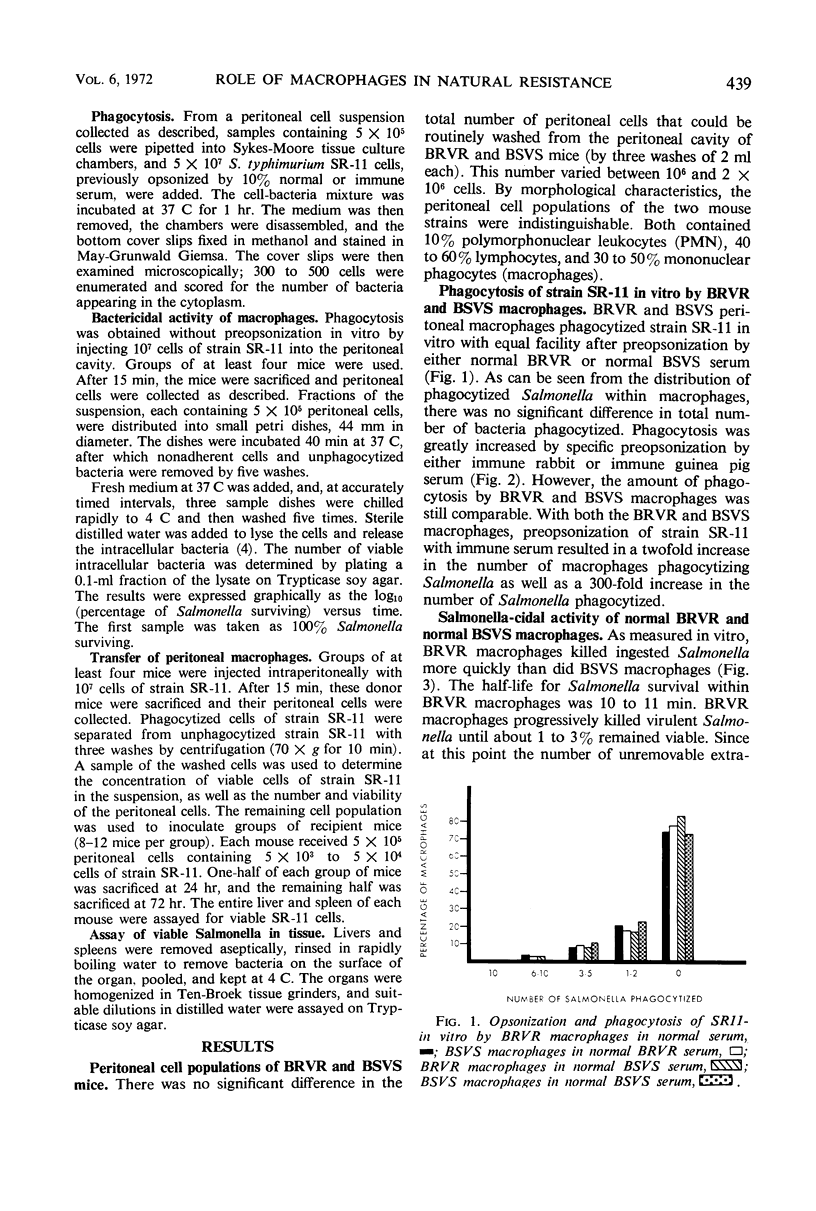
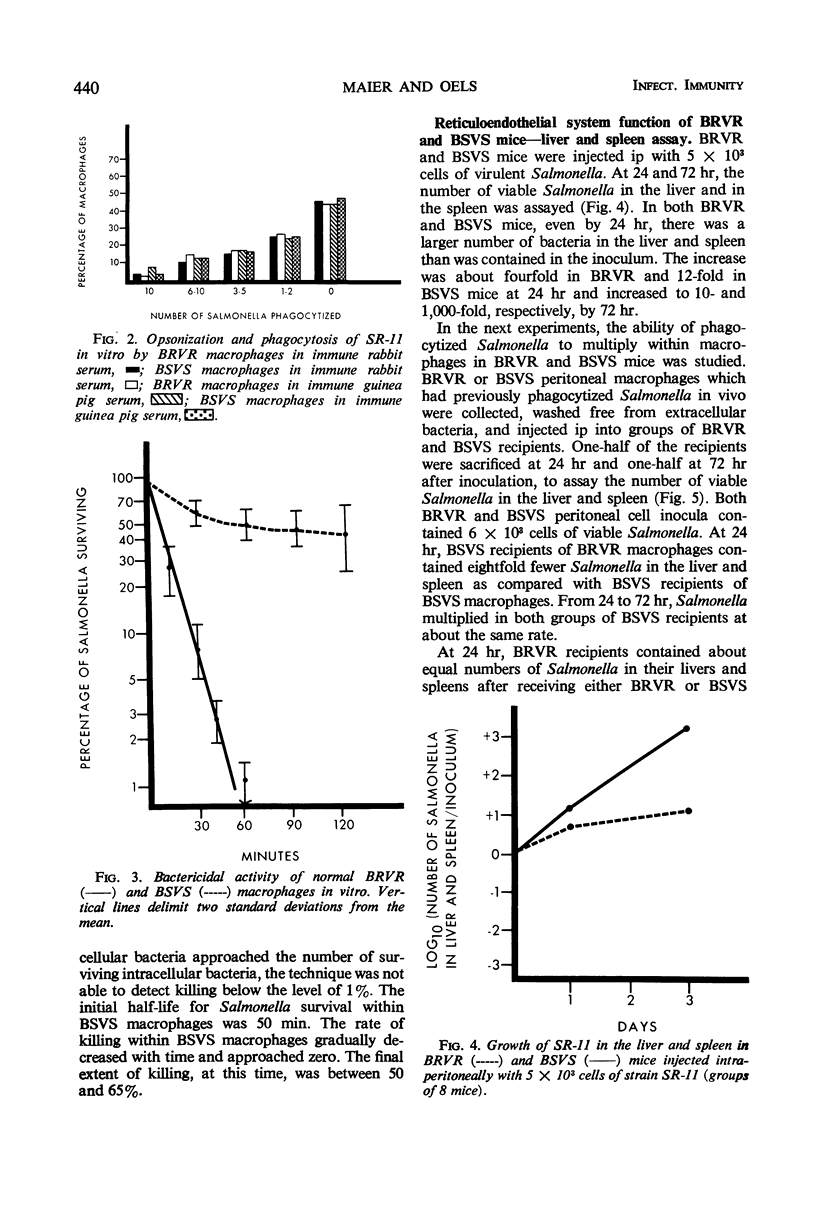
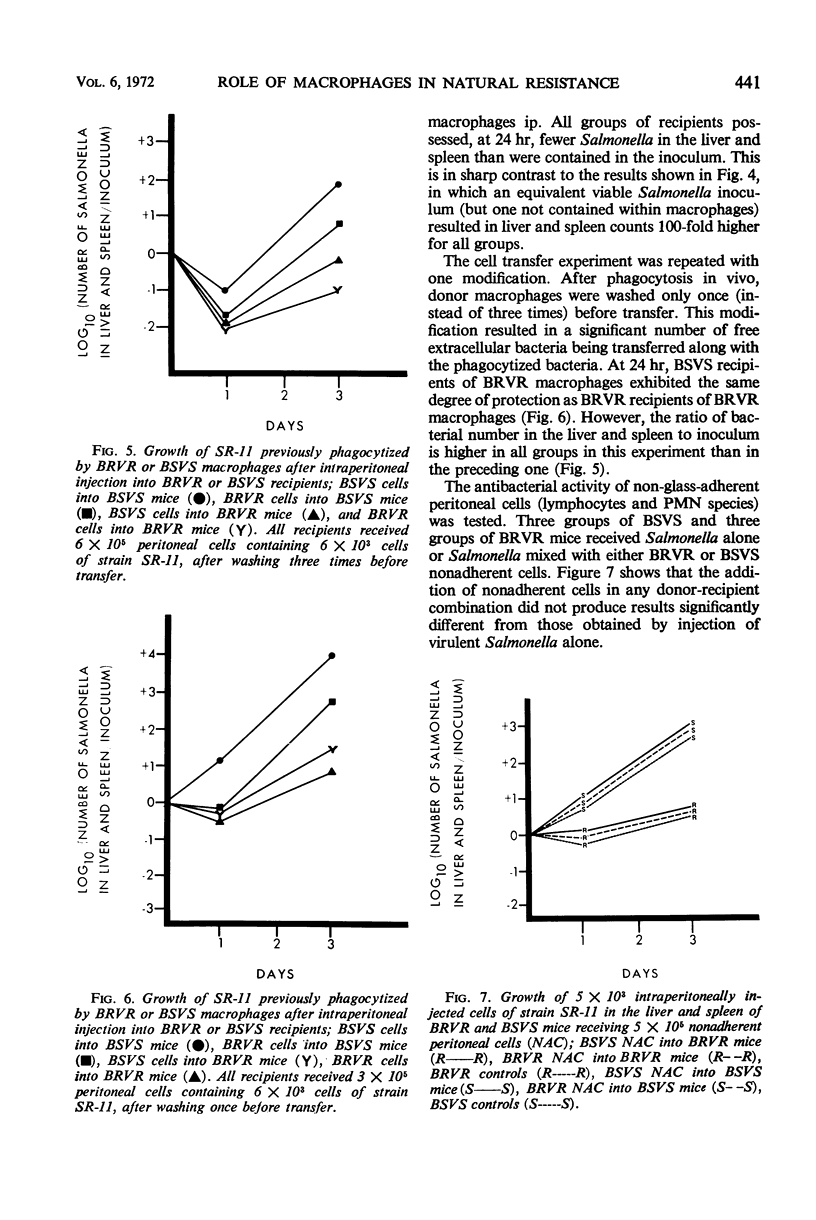
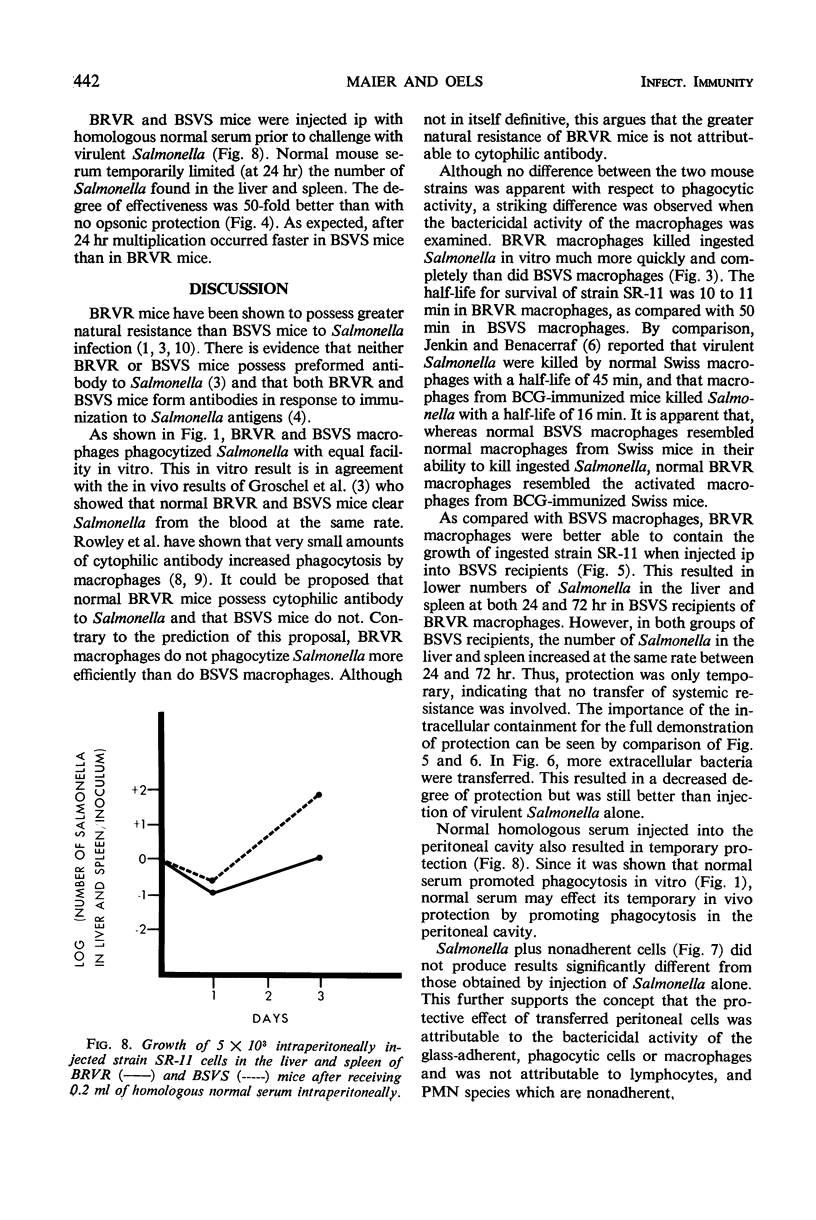
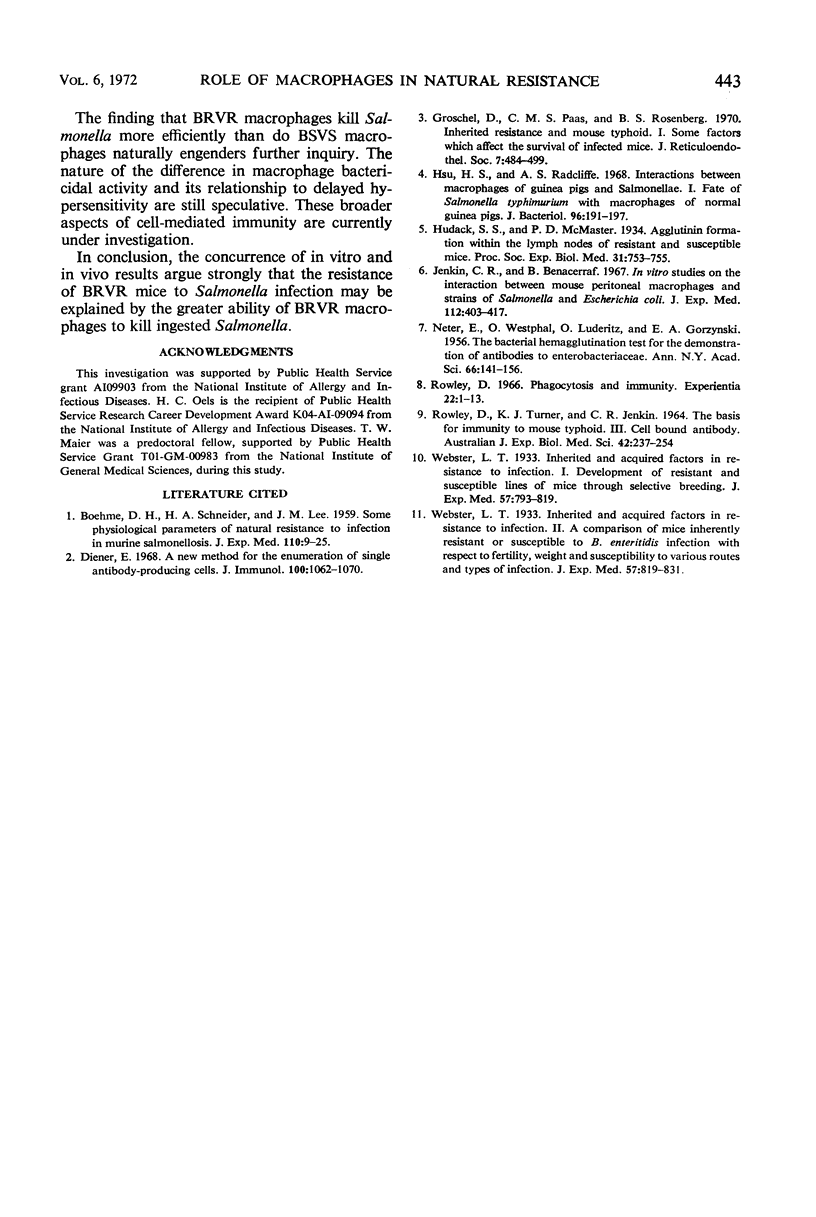
Selected References
These references are in PubMed. This may not be the complete list of references from this article.
- BOHME D. H., SCHNEIDER H. A., LEE J. M. Some physiopathological parameters of natural resistance to infection in murine salmonellosis. J Exp Med. 1959 Jul 1;110(1):9–26. doi: 10.1084/jem.110.1.9. [DOI] [PMC free article] [PubMed] [Google Scholar]
- Diener E. A new method for the enumeration of single antibody-producing cells. J Immunol. 1968 May;100(5):1062–1070. [PubMed] [Google Scholar]
- GORZYNSKI E. A., LUDERITZ O., NETER E., WESTPHAL O. The bacterial hemagglutination test for the demonstration of antibodies to Enterobacteriaceae. Ann N Y Acad Sci. 1956 Aug 10;66(1):141–156. doi: 10.1111/j.1749-6632.1956.tb40113.x. [DOI] [PubMed] [Google Scholar]
- Gröschel D., Paas C. M., Rosenberg B. S. Inherited resistance and mouse typhoid. I. Some factors which affect the survival of infected mice. J Reticuloendothel Soc. 1970 Apr;7(4):484–499. [PubMed] [Google Scholar]
- Hsu H. S., Radcliffe A. S. Interactions between macrophages of guinea pigs and Salmonellae. I. Fate of Salmonella typhimurium within macrophages of normal guinea pigs. J Bacteriol. 1968 Jul;96(1):191–197. doi: 10.1128/jb.96.1.191-197.1968. [DOI] [PMC free article] [PubMed] [Google Scholar]
- JENKIN C., BENACERRAF B. In vitro studies on the interaction between mouse peritoneal macrophages and strains of Salmonella and Escherichia coli. J Exp Med. 1960 Aug 1;112:403–417. doi: 10.1084/jem.112.2.403. [DOI] [PMC free article] [PubMed] [Google Scholar]
- ROWLEY D., TURNER K. J., JENKIN C. R. THE BASIS FOR IMMUNITY TO MOUSE TYPHOID. 3. CELL-BOUND ANTIBODY. Aust J Exp Biol Med Sci. 1964 Apr;42:237–248. doi: 10.1038/icb.1964.25. [DOI] [PubMed] [Google Scholar]
- Rowley D. Phagocytosis and immunity. The carrier state and cellular immunity. Experientia. 1966 Jan 15;22(1):9–13. [PubMed] [Google Scholar]


